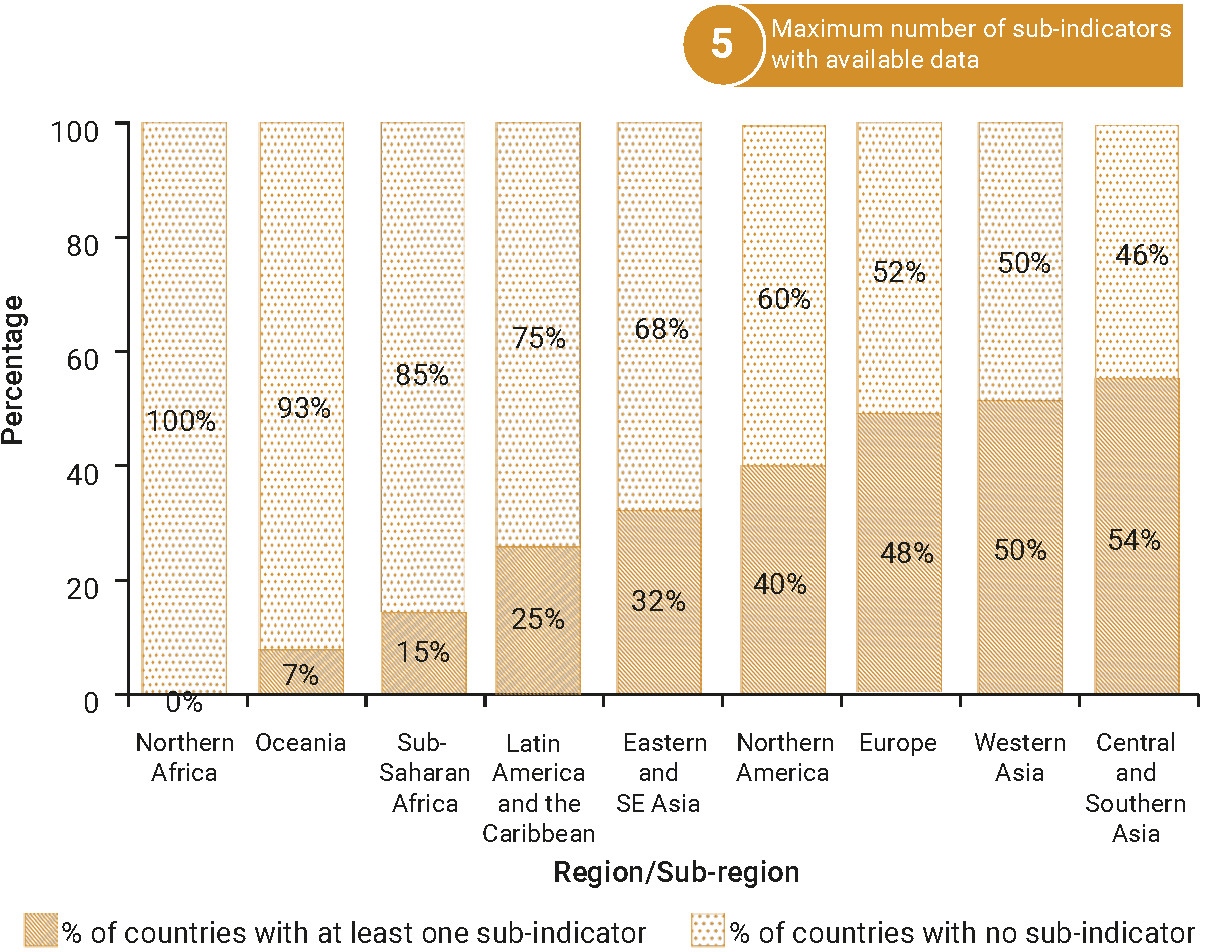SDG Indicator 11.4.1: Total per capita expenditure on the preservation, protection, and conservation of all cultural and natural heritage, by source of funding (public, private), type of heritage (cultural, natural) and level of government (national, regional, and local/municipal)
1. Key features and metadata
Definition: This indicator tracks the total funding from governments (central, regional and local), private sources (household, corporate and sponsorship or international sources) in the preservation, protection and conservation of cultural and/or natural heritage for a given year per capita, expressed in Purchasing Power Parities (PPP) in constant United States dollars.
| Sub-indicator | Disaggregated by |
|---|---|
|
GB_XPD_CULNAT_PB Total expenditure per capita spent on cultural and natural heritage, public (PPP, constant 2017 USD) |
Level of government (national/regional/local)
|
|
GB_XPD_CULNAT_PBPV Total expenditure per capita spent on cultural and natural heritage, public and private (PPP, constant 2017 USD) |
|
|
GB_XPD_CUL_PBPV Total expenditure per capita spent on cultural heritage, public and private (PPP, constant 2017 USD) |
|
|
GB_XPD_NAT_PBPV Total expenditure per capita spent on natural heritage, public and private (PPP, constant 2017 USD) |
|
|
GB_XPD_CULNAT_PV Total expenditure per capita spent on cultural and natural heritage, private (PPP, constant 2017 USD) |
Sources of information: National Statistical Offices from multiple sources: ministries of finance and/or ministries of culture, environment financial management, local authorities, and specific surveys on private expenditure. Plus, additional international sources (e.g. OECD-DAC).
Related SDG Indicators: 8.3.1 (Proportion of informal employment in total employment, by sector and sex) and 11.3.2 (Proportion of cities with a direct participation structure of civil society in urban planning and management that operate regularly and democratically).
2. Data availability by region, SDG Global Database, as of 02 July 2025

3. Proposed disaggregation, links to policymaking and its impact
| Proposed disaggregation | Link to policymaking | Impact |
|---|---|---|
|
Average share of expenditure from local governments (%)(UNESCO 2009b; International Monetary Fund [IMF] 2014; UN 2023e):
|
The ‘heritage economy’ yields various benefits in terms of employment, revenues, tourism and leisure activities, local entrepreneurship, and innovation in many domains. Sustained financial efforts in the sector are essential to ensure the safeguarding, maintenance and valuation of the many components of national heritage – whether cultural or natural – and support modern economies and social activities based on the multiple uses of heritage (UNESCO 2015). This disaggregation offers the advantage of highlighting the overall comparative financial effort made at sub-national levels (regional, local) for the safeguarding and enhancement of national heritage. It also points to the areas where additional investment should be made to benefit from the multidimensional contribution of cultural and natural heritage to sustainable development. Notably, as a driver of urban economies and employment as well as social cohesion. It is consistent with the World Heritage Convention (UNESCO 2023a) and the New Urban Agenda (UN 2016b). |
The 2030 Agenda recognizes the central role played by natural and cultural heritage in sustainable economic development; environmental protection; support for social integration, equity and cultural diversity; and the promotion of a collective identity and quality of life for the population. However, most of the financial efforts for the safeguarding and enhancing heritage are pledged by central governments, with limited investment from sub-national levels of government. Many local governments lack the legal frameworks and operational strategies to carry out adequate management of cultural and natural heritage sites (UN 2023e). Therefore, there are real opportunities to increase awareness among local authorities and their constituencies of the potential related to the protection, maintenance and development of cultural, natural and indigenous heritage. This includes local and indigenous knowledge as well as innovation prospects based on linkages with other dimensions of development – such as culture, tourism, environmental quality, and related economic activities (UNESCO 2015; UNESCO 2023b). |

